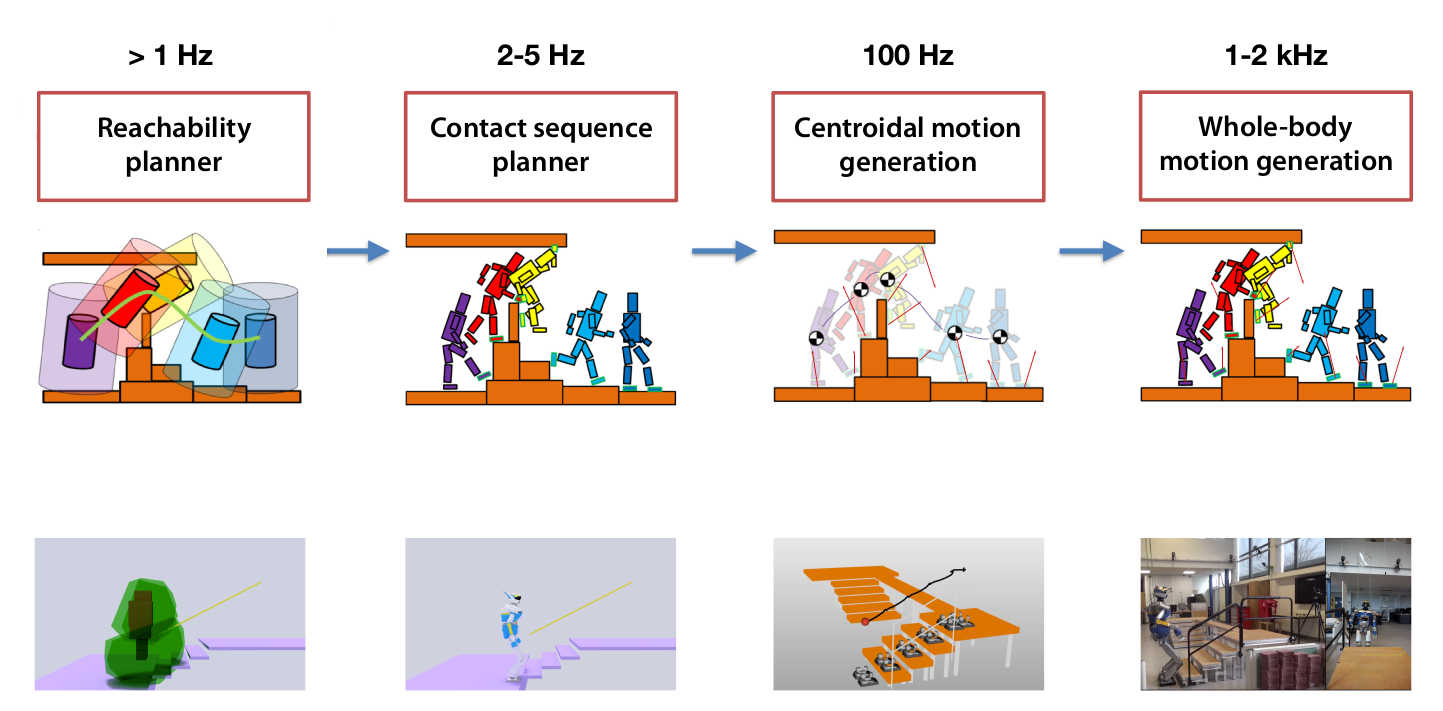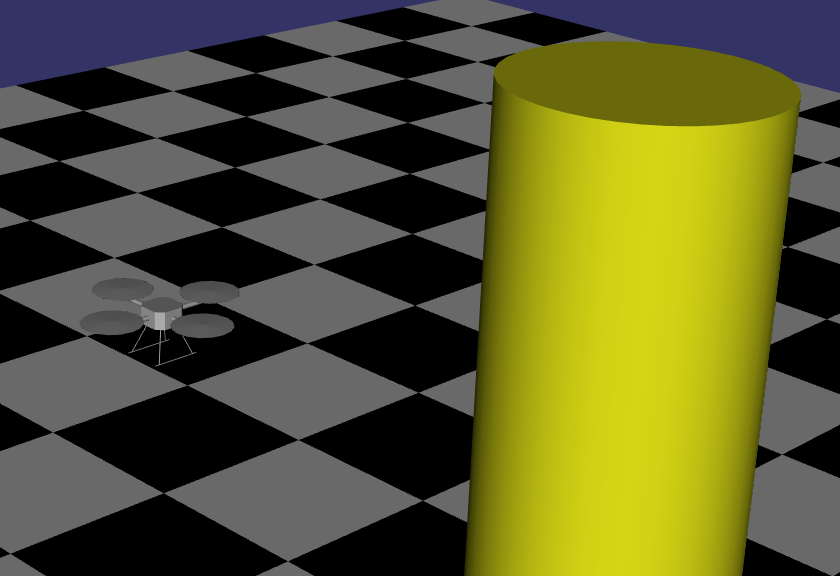Planning, adapting and executing multi-contact locomotion movements on legged robots in complex environments remains an open problem. In this proposal, we introduce a complete pipeline to address this issue in the context of humanoid robots inside industrial environments. This pipeline relies on a multi-stage approach in order to simplify the process flow and to exploit at best state-of-the-art techniques both in terms of contact planning, whole-body control and perception. The main challenges lie in the choice of the different modules composing this pipeline as well as their mutual interactions: e.g. at which frequency rates each module has to work in order to allow safe and robust locomotion? or which information must transit between the modules? We named this project Loco3D standing for Locomotion in 3D, in contrast to the classic locomotion on quasi-flat terrains, where the motion of the center of mass of the robot is mostly limited to a 2D plane.
J Carpentier, A Del Prete, S Tonneau, T Flayols, F Forget, A Mifsud, K Giraud, D Atchuthan, P Fernbach, R Budhiraja, M Geisert, J Solà, O Stasse, N Mansard
In RSS Workshop on Challenges in Dynamic Legged Locomotion, IEEE., 2017.

